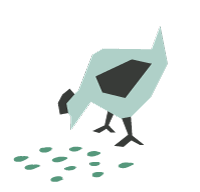How do you and debt get along?
Is your goal to be debt free? Do you think of debt as being a necessary evil? Any answer will be very much a function of personal opinion – with no ‘wrong’ answers. I regularly talk to people who would very much like to be out of debt. In some situations, that is probably a good outcome for which to strive.
Here’s another question. Are you waking up at night and not able to get back to sleep … where debt is dominating your thought patterns? Debt can be burdensome and with that, weigh heavily on a person causing significant stress. Stress for the individual and also stress that creeps into relationships and interactions.
Answers to these questions require information and context. Just worrying about debt will not help with answers. I think in a lot of situations, it will feel like there is no solution or way forward to where the level of stress associated with debt can become acceptable, or at least manageable.
To that point, and notwithstanding someone’s personal feelings about debt, I think the questions about debt should first be how much and second, how to manage it.
You can grow a crop without inputs. You will get a result. Similarly, you can farm without debt. But can you get the results you want in a time frame that you find acceptable. This is a fundamental question. A decision is required about whether someone might want to go into debt in the first place. In the current farm environment, it’s extremely difficult to purchase assets without debt. When you first went into debt, did you discuss what it meant and how you were going to deal with it, or was it a function of the ‘necessary evil’ aspect associated with a significant capital purchase?
Without taking on debt, purchases are made with cash. Possible … but let’s get back to the more common situations where debt exists on a farm.
If you fall into the category of debt being burdensome, at what point did it become burdensome? What happened? Tt may have been a specific capital purchase where a large amount of debt was added. Or an extended period of low or negative profit margins. Or the unmanageable situations where the capital purchase was made and immediately followed by two or three years of low profit. It doesn’t take long for debt to become burdensome when profit margins disappear.
Has it been a function of compounding payments? By my observations, many purchases that are financed on a farm are analyzed from a frequency and amount of payment perspective. Semi-annual payments of $7,500 for example. In of itself, those payments might not appear to be excessive. But what about all the other commitments?
Another pitfall is assessing the purchase and related debt payment commitments by the amount of ‘cash required per acre’. Farmers will tell me that they strive to keep their overall payments at ‘x’ dollars per acre and at that level, should be able to make the commitments. There’s nothing wrong with using dollars/acre as a guideline but … and this becomes more important as the level of debt committed to increases … there is more to understand. What has changed, is changing, or is about to change in the farm environment and in your own business and family? Answers to these questions can have a profound impact on how much debt you can or should commit to and can easily be less than the established dollars/acre guideline.
If your debt feels burdensome, one of the first things to do is to determine if the level of debt has been increasing over time. Answers to this question pertain to the information and context point made above. Debt obviously will have different origins. Understanding where it has come from is important. Just looking at the overall amount of debt can, as mentioned, sometimes feel overwhelming. Knowing as much as you can about your financial situation relative to debt is extremely important!
One thing is for sure. You cannot borrow yourself out of debt. Strange as that sounds … and I understand that this would not actually be the strategy … it might appear to a casual observer to be the case. Having said that, sometimes the very best thing that you can do is ‘add’ more debt. Especially if it is tied to additional productive assets. Too much debt can be a problem. Debt in the wrong places and for the wrong reasons can be a problem.
But sometimes, the problem is simply too little debt. With interest rates where they are and with flexibility available for how repayment can be structured, my comment about how much and how to manage debt becomes a function of good business management.
Difficult discussions are often required, though, when debt feels burdensome. Worse, those discussions are typically avoided. Not very likely will the situation resolve itself. It certainly helps to have a clear picture and understanding of the debt in your business. If necessary, find someone to help.
If you would like to speak to one of our consultants about this topic contact us.



